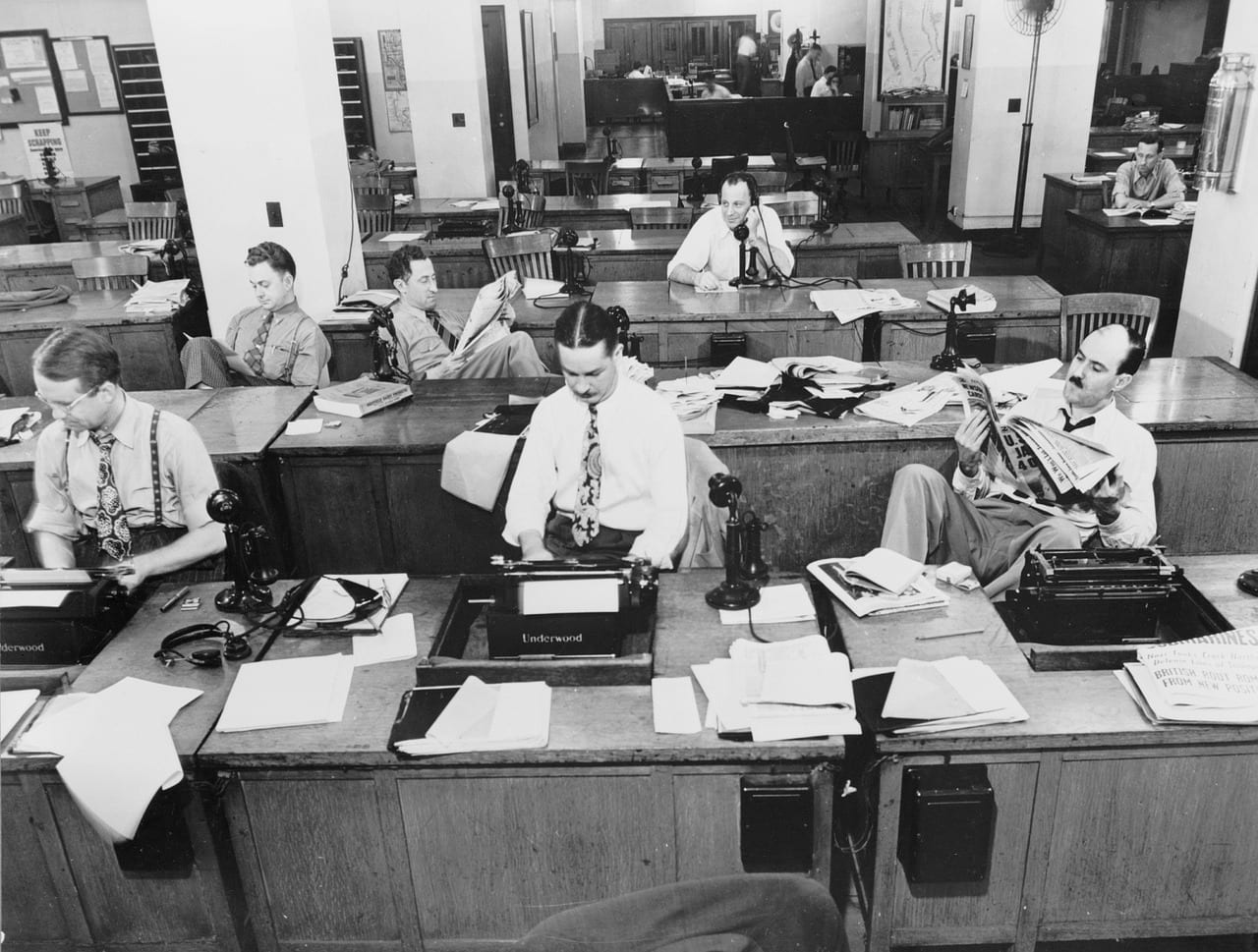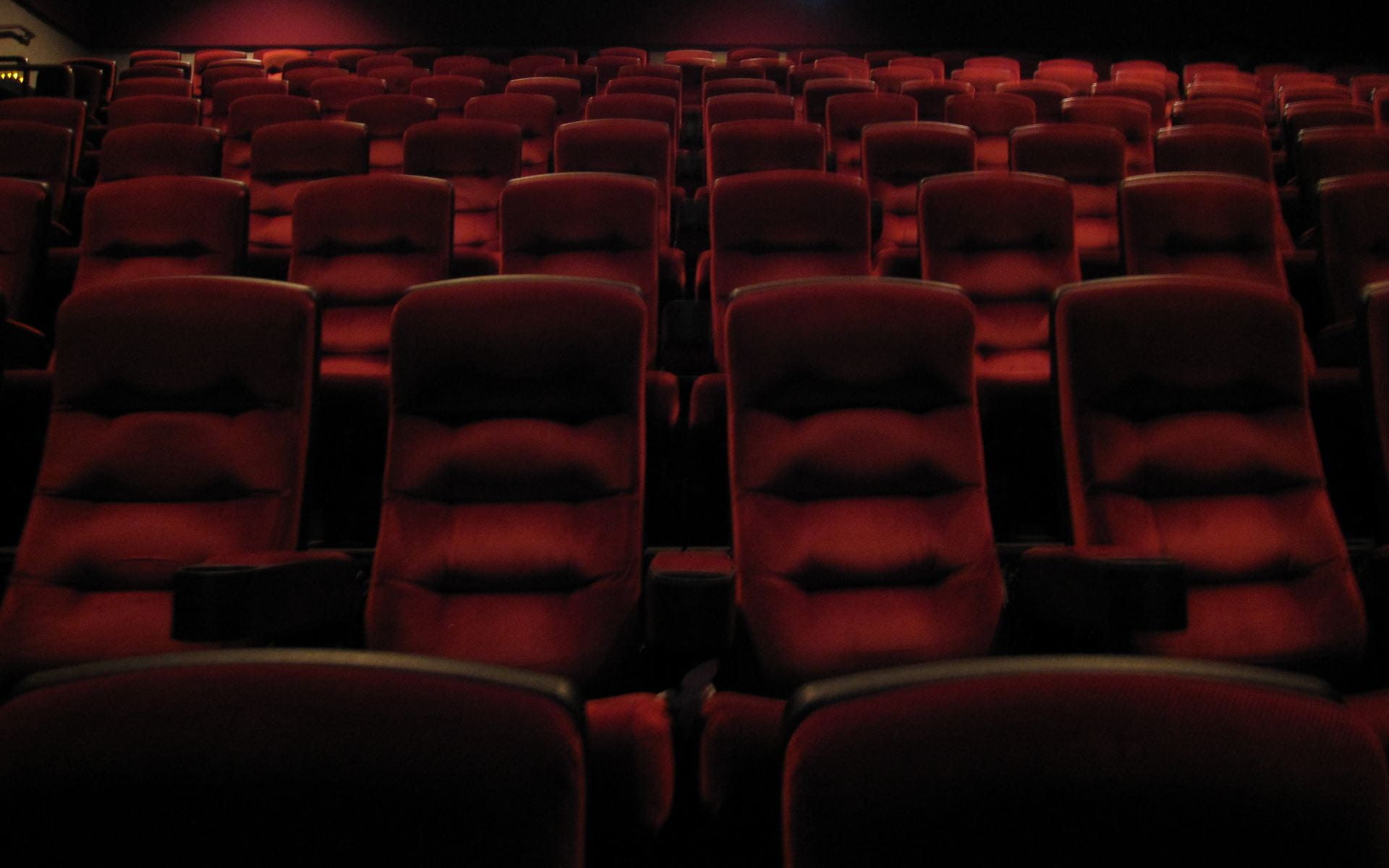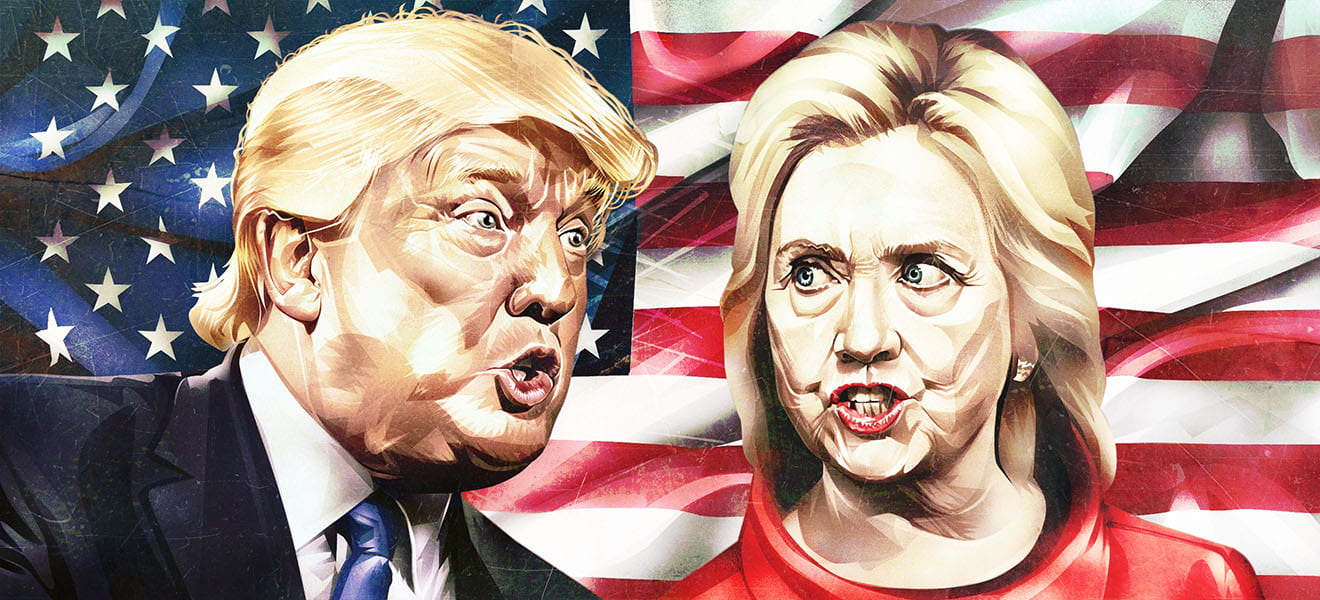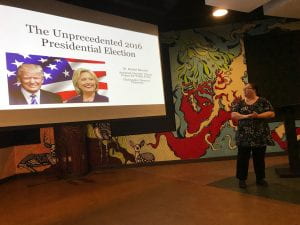by Andy Carr (guest blogger)
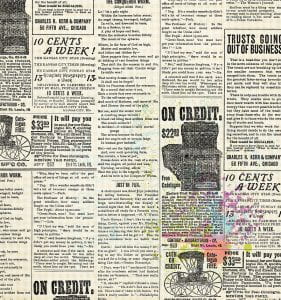
Throughout the past three decades, newspapers, magazines and online sources of news and analysis have faced deepening challenges. As I explained in a blog post last year, “the labor crisis in journalism [is] a human rights concern unto itself.” In particular, consolidation of media outlets into fewer holding companies restrains the “viewpoint diversity” in coverage, an essential quality for citizens of democratic societies to stay informed and to hold leaders to account.
Just over a year later, these concerns have only escalated with the twin public health and economic crises brought on by the novel coronavirus pandemic.
The Poynter Institute has maintained a regularly updated list of all closures, pay cuts, furloughs, layoffs and other employment changes at American outlets, here. One cumulative figure for media-sector impacts? Over 36,000 to date in 2020, according to the New York Times.
Granted, media and journalism job losses are a small fraction of total job losses. According to another New York Times report on unemployment claims since the start of the pandemic, estimated at 36 million jobs vanished throughout the United States through mid-May; by May 21, NPR added in an update, the total climbed to 38.6 million unemployed, with America’s poorer families and minority communities facing job loss rates double the national average.
Because of the advertising revenue-based funding model for most media organizations today, however, proportional financial losses in the field have been extreme, far offsetting increased readership and subscription rates. At Boston Globe Media—publisher of the storied daily paper, The Boston Globe—subscriptions surged by more than a third between March and May, but ads plunged by 30%, according to Digiday. Per CNBC, meanwhile, the New York Times might see ad revenue drop by a staggering 50 percent in the second quarter of 2020.
The same pattern is everywhere, from global conglomerates like Disney and major city papers like the Dallas Morning News to countless smaller, local outlets nationwide. At the extremes are cases like Cleveland’s 178-year-old daily, The Plain-Dealer, which cut almost its entire unionized staff by April 2020, leaving only some “60 to 65 journalists” at Cleveland.com, “a sister non-union company,” reports Poynter.
A subject covered less comprehensively amid drastic shifts is the combined effect of remote work, lockdowns and mass layoffs on labor organizing and activism—to say nothing of daily individual hardships—throughout this industry. In brief, it’s been a bloodbath. VICE Media offers an instructive example.
In mid-April, the Wall Street Journal initially reported that some “300 Vice employees in its digital operations unit” were set to be laid off, per an internal document obtained by the Journal. In response, as The Hill reported, Vice pushed back, claiming “that the plan [had] not been ‘vetted or endorsed’ by Vice Media Group and that no decisions at the company [had] been made.” Just a few weeks later, VICE ultimately went ahead with layoffs, though fewer than the Journal had suggested: cutting 155 workers as of May 15, on top of roughly 250 just a year earlier.
CNBC’s accounting of VICE’s latest cuts noted that the latter company’s CEO Nancy Dubuc blamed “not only…coronavirus, but [also] Big Tech companies taking the lion’s share of digital advertising growth.” Dubuc’s comment is an understatement: As of 2019, just three firms—Google, Facebook and Amazon—collected “68.1% of all digital ad spending,” including 69% of mobile ads.
At the same time, the extraordinary financial stratification of digital media companies has not gone unnoticed. Kim Kelly, a freelance journalist who has been published in Teen Vogue and contributed to The New Republic and others, in addition to VICE, said on Twitter that this “annual bloodletting ritual” left her “sad and furious.”
Kelly pointed to Dubuc as one example of many sky-high “executive salaries,” despite the precarity of rank-and-file journalists: While Dubuc’s VICE CEO salary has not been published, the New York Post in 2016 published details about her sale of a 4,200-square-foot Upper West Side townhouse for $9.4 million.
It’s part of an indelible pattern at media firms. Poynter noted early last year that even companies with “revenues down, posting a loss and stock price sliding” still pay out millions in top-level corporate compensation – more than “$5.2 million for [Gannett’s] Bob Dickey and [$2.8 million] for Craig Forman at McClatchy.” Coronavirus-related layoffs at McClatchy have hit roughly 4.4% of all staff; Gannett has laid off an unknown number of workers at its 261 newspapers throughout the country, though dozens of smaller-scale losses have been reported individually.
(As a structural concern, these patterns map onto the trajectory of TV broadcasters a generation ago. As Halliwell and Morley explained in American Thought and Culture in the 21st Century, deregulatory actions from the 1980s through the 1996 Communications Act “loosened restrictions on station ownership [and] allowed media conglomerates…to amass greater numbers of [TV] and radio stations” (p. 278). Many of the same conglomerates own significant stakes in digital and print media firms today, replicating their TV models at newspapers and magazines.)
Back at VICE, the company’s WGAE-represented union was blindsided by the cuts, condemning the company’s leaders for “repeatedly failing to discuss workshare programs…used to avoid layoffs” at other outlets, according to a union statement posted on Twitter. Moreover, the statement continued, VICE “did not agree to make further cuts to executive compensation” to avoid layoffs “in the middle of a global pandemic.”
Between the more than 30 million unemployment claims and tens of thousands of media-sector layoffs since the start of the pandemic, though, a large number of freelance workers have been excluded from most tallies. Especially in media, where delays in paychecks and low “kill fees” for scrubbed articles routinely put freelancers in a bind, the data are undercounting and effectively excluding many who already struggled.
As early as mid-March, long before many major cities followed New York and Seattle into lockdowns, freelancers saw their lined-up interviews, previously accepted pitches, speaking engagements and editing opportunities suddenly canceled.
Taylor Crumpton, an Oakland-based freelance cultural journalist who has written for Paper Magazine, Pitchfork and many other outlets, was one of few to give a precise dollar amount: $2,000 in lost commissions through March 2020. As Crumpton explained further to Girls United, an Essence Magazine project providing mentoring and community for young Black women in digital spaces, simultaneously working as a social worker on the “front line…with homeless youth” was simply “frightening.”
She added: “The disheartening part of this is witnessing my counterparts lose 50–80% of their yearly income, so I’ve been uplifting their links to purchase products, or donate to PayPal, CashApp, and Venmo. Because of this pandemic, I lost a cover story with an artist who I’ve been working towards interviewing for years.”
Through early May, Crumpton added in a Twitter update, other opportunities evaporated, from co-hosting a podcast to multiple staff writer positions.
As Crumpton and others have pointed out as well, the disproportionate effects of COVID-19 on racial and ethnic minority groups in CDC data and in employment figures appear to be reflected in media-layoff patterns. Bianca Gracie, who left Billboard in April, frankly summarized the layoffs in her network on Twitter: “Woman, woman, Black person, woman, Latinx person, Black person, woman, another POC, Black person, Latinx person…the pattern is either coincidental or deliberate.”
Crumpton, Gracie, and their colleagues’ experiences speak to society’s digital superstructure, especially amid a global pandemic that precludes most in-person interaction. As E. Gabriella Coleman explained a decade ago in her survey of digital media ethnographies, the totality of our “digital age remains a powerful structuring emblem with material and cultural consequences” (490), including both its capacity to give voice to or further “marginalize groups,” in academia and in practice.
In other words—just like the wrenching, cyclical losses across America’s broader economy—the social, economic, and other costs of media’s implosion are not evenly distributed, but are weighted heavily against those already long excluded.
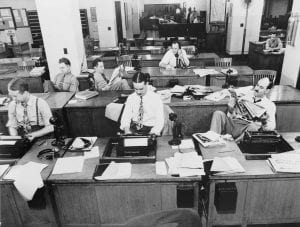
But what are the implications of these far-reaching changes for organizing efforts in media? And what particular, heightened challenges do they pose, especially now?
At unionized outlets, bargaining with executives over protections for fired, furloughed or otherwise affected workers continues. Both the BuzzFeed News and VICE Media unions, for example, have been engaged in discussions, while Wired, part of Conde Nast’s portfolio of outlets, is seeking union recognition. All three, among many others, have centered robust severance packages in their demands – vital financial safeguards for suddenly unemployed former colleagues, often living in some of the nation’s most-expensive cities.
At BuzzFeed News, the union’s overriding goal has been making any crisis-response decisions collectively and, most importantly, preventing any job losses, union members or not. One potential model for distributing costs while preserving employment sought by the BuzzFeed News Union is the modified “Work Sharing Program” at the recently recognized Los Angeles Times’ own newsroom guild. The Program, adopted at the start of May, implemented across-the-board pay cuts and hour reductions, but with a minimum 12-week ban on layoffs.
Crucially, the Program—whose name derives from the “Work Sharing Program” under California Unemployment Insurance laws, established in 1978—“allows eligible employees to receive unemployment benefits” while working reduced hours, subject to state approval. Although the Program’s legal requirements and applicability restrictions are extensive, it helps fill income gaps for individual workers while allowing the company to absorb lost advertising revenue.
Though union-led efforts are in flux, they offer some promise to their members and other workers at those outlets. For others working at non-union outlets and for freelancers, in particular, the challenges are even greater.
Some media freelancers may have access to membership in the IWW Freelance Journalists Union, from “journalists, writers, [and] editors” to “researchers, programmers and printers.” But IWW-FJU’s New York City membership criteria, for example, are limited to current industry workers. For those already laid off or who have worked more than a month in other sectors to make ends meet, may be ineligible to join, or, if they are already a member, “must transfer” their union membership, where possible.
Regardless of union affiliations or publishing platforms, freelancers face compounded frustrations that are all-too-familiar, but worse than before. These include challenged or reneged invoices, late payments, slashed budgets, and the logistical difficulties of simply doing their jobs—when they can—entirely remotely, without any meaningful separation from their commitments to family or roommates at home.
Nor are billionaire philanthropists and “impact” investors, like the high-profile owners of the Washington Post or L.A. Times, likely to save the day. Another billionaire-backed publication, the Atlantic, was reported to be joining the vast ranks of hobbled legacy media outlets. In total, 20% of all staff are being laid off at the magazine.
It would almost seem remarkable—except for its familiarity—that just last year, billionaire Laurene Powell Jobs, “the California-based widow of Apple founder Steve Jobs,” further consolidated financial ownership and control of the magazine through Emerson Collective, an “impact investing” LLC founded by Powell Jobs, POLITICO reported at the time. Powell Jobs herself wrote in the Atlantic about the values of journalism—a lifeblood of democracy—as well, aligning herself with journalists’ “struggle for the soul of this nation,” the “side of those who are fighting for the truth.” (Forbes estimates current Powell Jobs’ net worth is $19.5 billion.)
What’s left for solutions? Crowdfunding, like any number of fundraisers for furloughed and freelance workers or for state-specific media sectors, is heartening proof of media camaraderie and commitments to mutual support, but a limited source of relief given the extremity of losses.
For similar reasons, expanding subscription-based funding is unavailing at best in times of Great Depression-level unemployment – such individualized, voluntary forms of support simply lack necessary scale. Such “subscription-powered” media have been extended with some success to individual journalists and writers through newsletter-styled Substack, on Patreon, or other platforms. Unfortunately, as Forbes magazine recently explained, subscriber models, whether for media outlets or solo writers, “need a lot of name recognition” to work.
Given the enormous losses accelerated by the pandemic and less-than-promising options above, public efforts, coordinated and funded through the state, are likely necessary. This alternative is favored by the NewsGuild-CWA, America’s largest journalist union, which announced their Save The News initiative and related efforts “calling for federal, state, provincial, and local governments to provide public funds to sustain news operations.” As the NewsGuild explained, such efforts are “quite possibly the only way to ensure long-term viability for…news-gathering operations.”
Many individual outlets’ unions have signed on and Save The News has channeled petitions, letter campaigns, and social media support into generating public support and congressional action. In a promising sign, Congress seems to be heeding the call: multiple bills have been introduced to extend some forms of emergency assistance, especially for struggling local media.
Prospects for passing remain uncertain and, even if passed, myriad structural and financial challenges predating the pandemic will not be resolved. Much, much more will be necessary.
But there’s a start.
